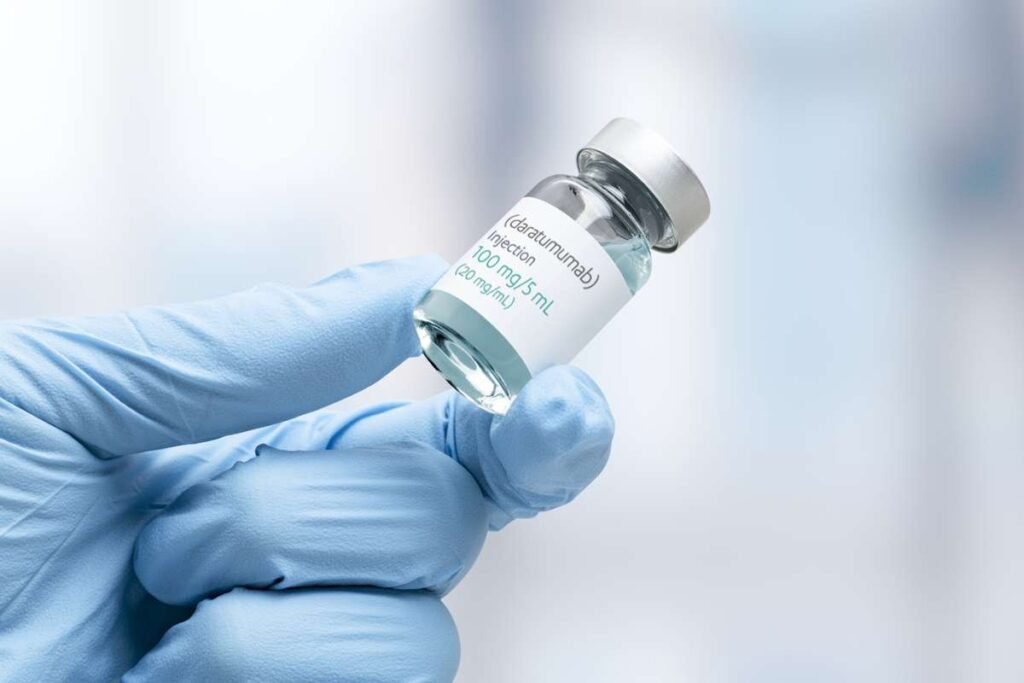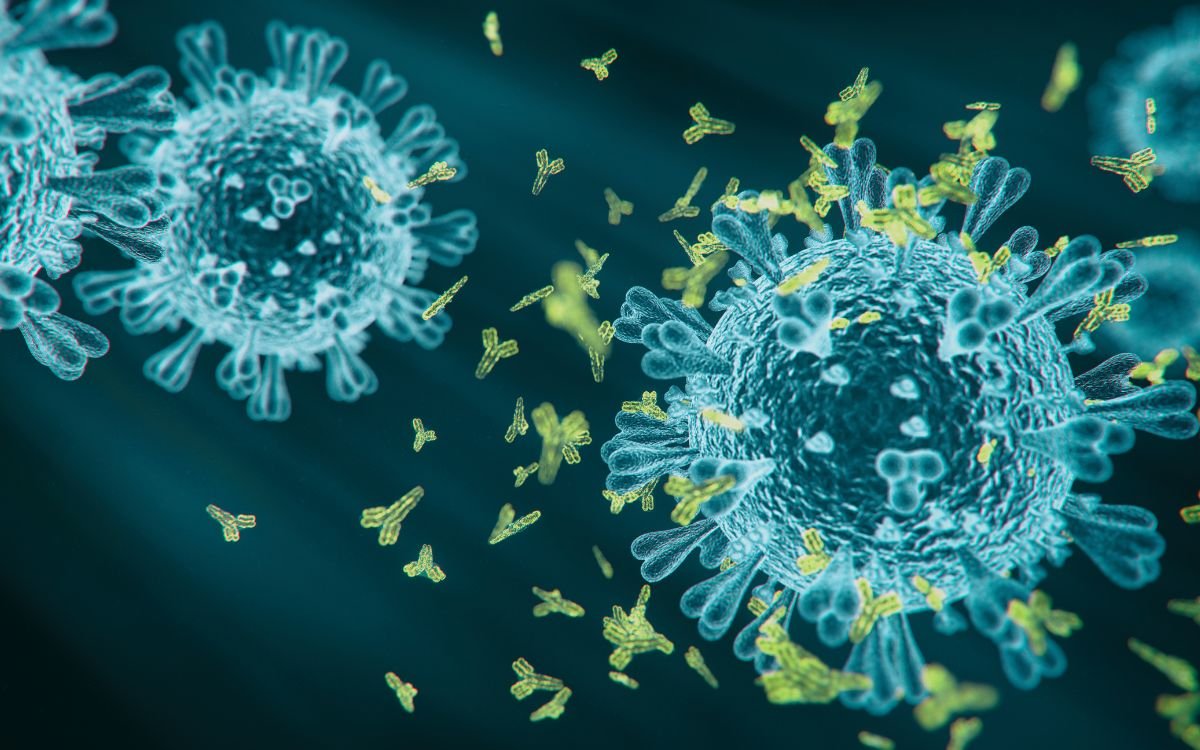Multiple myeloma is a serious and incurable blood cancer that affects millions of people worldwide. But there is hope. A new drug called daratumumab in multiple myeloma has been making waves in the medical community for its remarkable ability to fight this disease. In this blog post, we will explain everything you need to know about daratumumab in multiple myeloma, including what it is, how it works, and what are the benefits and risks of using it. Whether you are a patient, a caregiver, or just curious, this blog post will give you the information you need to understand this breakthrough treatment.
What is multiple myeloma?
Before we dive into daratumumab, let’s first understand what multiple myeloma is and why it is so challenging to treat. Multiple myeloma is a type of cancer that starts in the plasma cells. Plasma cells are a type of white blood cell that make antibodies to help your body fight infections. Normally, plasma cells are produced in the bone marrow and then released into the blood stream.
However, in multiple myeloma, something goes wrong. Some of the plasma cells become abnormal and start to grow and multiply uncontrollably. These abnormal plasma cells are called myeloma cells. They crowd out the normal blood cells in the bone marrow and interfere with their functions. They also produce abnormal antibodies that do not work properly and can cause problems in other organs.
Multiple myeloma can cause a variety of symptoms and complications, such as:
- Anemia: This means you have low levels of red blood cells, which carry oxygen throughout your body. This can make you feel tired, weak, and short of breath.
- Thrombocytopenia: This means you have low levels of platelets, which help your blood clot. This can make you bleed and bruise easily.
- Neutropenia: This means you have low levels of neutrophils, which are a type of white blood cell that fight infections. This can make you more prone to infections.
- Hypercalcemia: This means you have high levels of calcium in your blood. This can happen because the myeloma cells damage your bones and release calcium into your blood stream. This can cause nausea, vomiting, constipation, confusion, and kidney damage.
- Bone pain and fractures: This can happen because the myeloma cells weaken your bones and make them more likely to break.
- Kidney failure: This can happen because the abnormal antibodies produced by the myeloma cells clog up your kidneys and prevent them from filtering your blood properly.
- Nerve damage: This can happen because the myeloma cells or their products press on your nerves and cause pain, numbness, or weakness.
- Amyloidosis: This is a rare condition where the abnormal antibodies produced by the myeloma cells form deposits in various organs and tissues, such as the heart, kidneys, liver, or nerves. This can cause damage and dysfunction.
Multiple myeloma is not curable, but it can be treated with various therapies that aim to control the disease, reduce symptoms, and improve quality of life. The choice of treatment depends on several factors, such as the stage of the disease, the patient’s age, health status, preferences, and response to previous treatments.

What is daratumumab?
Daratumumab is a new drug that belongs to a class of drugs called monoclonal antibodies. Monoclonal antibodies are man-made proteins that mimic the natural antibodies produced by your immune system. They work by targeting specific proteins on the surface of certain cells and triggering an immune response against them.
Daratumumab in multiple myeloma targets a protein called CD38. CD38 is a protein that is found on many cells in your body, but especially on plasma cells. By attaching to CD38, daratumumab can activate your immune system to attack and kill the myeloma cells that express this protein.
Daratumumab in Multiple Myeloma was approved by the Food and Drug Administration (FDA) in 2015 for the treatment of patients with multiple myeloma who have received at least three prior therapies. Since then, it has been approved for several other indications, both as a single agent and in combination with other drugs. These include:
- In combination with lenalidomide and dexamethasone for patients with newly diagnosed multiple myeloma who are not eligible for stem cell transplant
- In combination with bortezomib, melphalan, and prednisone for patients with newly diagnosed multiple myeloma who are not eligible for stem cell transplant
- In combination with bortezomib, thalidomide, and dexamethasone for patients with newly diagnosed multiple myeloma who are eligible for stem cell transplant
- In combination with bortezomib and dexamethasone for patients who have received at least one prior therapy
- In combination with carfilzomib and dexamethasone for patients who have received one to three prior therapies
- In combination with pomalidomide and dexamethasone for patients who have received at least two prior therapies, including lenalidomide and a proteasome inhibitor
- Alone in people who have received at least three prior medicines, including a proteasome inhibitor and an immunomodulatory agent, or did not respond to a proteasome inhibitor and an immunomodulatory agent
Daratumumab is given as an infusion into a vein (intravenous or IV) at a dose of 16 mg/kg of body weight. The first infusion may take about 7 hours. Your doctor may split the first infusion over two consecutive days. If you tolerate the infusion well, subsequent doses may be given more quickly at your doctor’s discretion.
You will receive medications before and after each infusion to help prevent or reduce infusion reactions. These are common side effects that may occur during or shortly after the infusion. They may include:
- Fever
- Chills
- Cough
- Shortness of breath
- Low blood pressure
- Rash
- Itching
- Nausea
- Headache
If you experience any of these symptoms during or after the infusion, tell your nurse or doctor right away. They may slow down or stop the infusion temporarily or give you additional medications to manage the reaction.

How effective is daratumumab in multiple myeloma?
Daratumumab in multiple myeloma has shown impressive results in clinical trials across different settings and combinations. It has improved outcomes such as:
- Overall response rate (ORR), which is the percentage of patients who have a partial or complete reduction in the amount of abnormal plasma cells in their body
- Progression-free survival (PFS), which is the length of time from the start of treatment until the disease worsens or the patient dies
- Overall survival (OS), which is the length of time from the start of treatment until the patient dies
For example, in a recent study of patients with newly diagnosed multiple myeloma who were not eligible for stem cell transplant, daratumumab plus lenalidomide and dexamethasone achieved an ORR of 93%, compared to 82% for lenalidomide and dexamethasone alone. The median PFS was not reached for the daratumumab group, meaning that more than half of the patients were still alive and without disease progression at the time of analysis, compared to 31.9 months for the control group. The median OS was also not reached for the daratumumab group, compared to 83.3 months for the control group.
In another study of patients who had received at least one prior therapy, daratumumab plus bortezomib and dexamethasone achieved an ORR of 83%, compared to 63% for bortezomib and dexamethasone alone. The median PFS was 16.7 months for the daratumumab group, compared to 7.1 months for the control group. The median OS was not reached for either group at the time of analysis.
These are just some examples of the many studies that have demonstrated the effectiveness of daratumumab in multiple myeloma. You can find more information about these and other studies on reputable websites such as:
- The American Cancer Society
- The International Myeloma Foundation
- The Multiple Myeloma Research Foundation
What are the possible side effects of daratumumab in multiple myeloma?
As with any medication, daratumumab in multiple myeloma may cause side effects in some people. Some of the most common side effects that occurred in more than 20% of patients in clinical trials were:
- Infusion reactions (as mentioned above)
- Fatigue
- Nausea
- Back pain
- Fever
- Cough
- Upper respiratory tract infection
Daratumumab in multiple myeloma may also cause your blood cell counts to drop, which can increase your risk of anemia, bleeding, and infections. Your doctor will monitor your blood counts regularly and may adjust your dose or give you supportive medications if needed.
Daratumumab may also interfere with some blood tests that measure antibodies or blood types. This can affect your eligibility for blood transfusions or vaccinations. You should always tell your doctor and other health care providers that you are receiving daratumumab before you have any blood tests or procedures.
Daratumumab is not recommended for pregnant or breastfeeding Possible continuation:
As it may harm the unborn baby or pass into breast milk. You should use effective contraception during and after treatment with daratumumab and talk to your doctor if you are planning to become pregnant or breastfeed.
These are not all the possible side effects of daratumumab in multiple myeloma. You should report any new or worsening symptoms to your doctor as soon as possible. You can also find more information about the side effects and safety of daratumumab on the FDA website or the manufacturer’s website.
Conclusion
Daratumumab in multiple myelomais is a novel treatment that targets the CD38 protein on the abnormal plasma cells. It has shown remarkable results in clinical trials, both as a single agent and in combination with other drugs, across different settings and lines of therapy. It has improved response rates, survival, and quality of life for many patients with multiple myeloma.However, daratumumab is not a cure for multiple myeloma, and it may not work for everyone. It may also cause some serious side effects that require careful monitoring and management.
Therefore, it is important to consult your doctor before starting or changing your treatment with daratumumab. You should also follow your doctor’s instructions and report any new or worsening symptoms promptly. We hope this blog post has been helpful and informative for you.




























